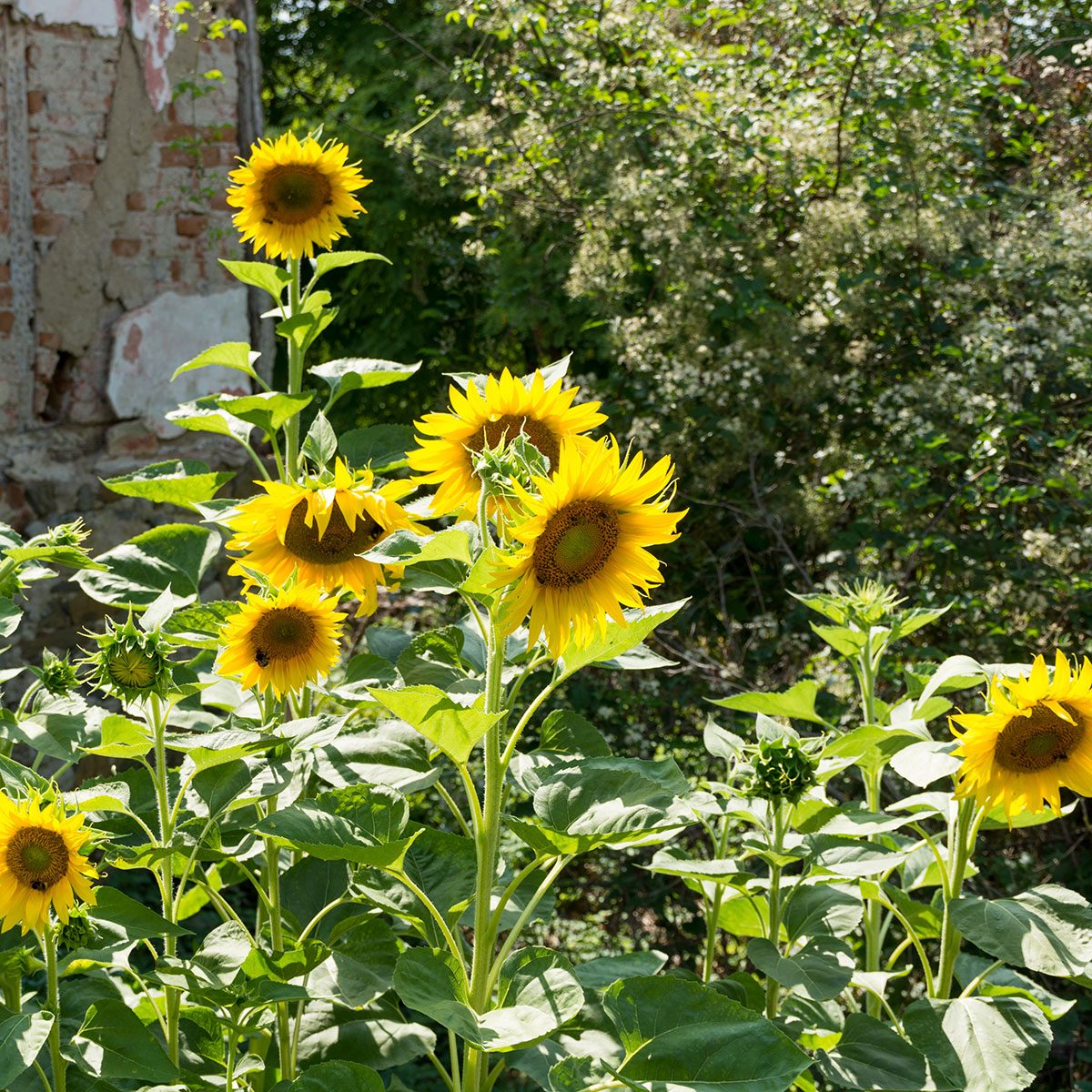Sunflowers grow best when you sow seeds directly in the garden. Here are a few tips to keep in mind to ensure success.
Our editors and experts handpick every product we feature. We may earn a commission from your purchases.Learn more.


Sunflowers grow best when you sow seeds directly in the garden. Here are a few tips to keep in mind to ensure success.
Our editors and experts handpick every product we feature. We may earn a commission from your purchases.Learn more.
If you’re looking to start a flower garden, the classic sunflower is always a great addition. Sunflowers bring vibrant color to your garden and attract beautiful visitors like hummingbirds, bees and ladybugs. For many, sunflowers are also a symbol of happiness thanks to their bright yellow pedals and sun-like appearance. Up ahead, we’re sharing how to grow sunflowers from seeds and what to do to help them thrive.
On This Page
Sunflowers come in various heights, bloom sizes and colors, all easy to grow from seed. Some sunflowers to consider include:
When choosing sunflower varieties for your garden, remember taller varieties may need to be staked.
Sunflower seeds are readily available. You can pick up a packet of seeds for just a few dollars at most garden centers. I’ve even gotten free sunflower seeds from my local library’s seed library.
“Sunflowers are very easy to grow and don’t really need all that much care. All they need is a sunny spot, fertile soil, and regular water,” says gardening expert Annette Hird, “This is especially important if you intend to grow them in pots because these can dry out quickly during hot summer days.”
Plant in the spring once your garden is frost-free. Sunflowers will not tolerate frost and germinate best in warmer soils, so don’t jump the gun.
In areas of the country that don’t get frost, sunflowers are still generally grown from spring through summer.
If you’re concerned you don’t have a long enough growing season for sunflowers to bloom, check the seed packet to see how long on average it takes that variety to flower. If the number of days is shorter than your growing season, start seeds indoors a few weeks before your frost-free date.
Sunflowers don’t like to be disturbed, so it’s best to leave them where you sow them.
“You can start the seeds indoors. It’s a good idea to just put one seed into each peat pot [a biodegradable pot made of peat moss] so that you can then plant them outside without disturbing the taproot,” says Hird, “They need the taproot to support those tall stems. And make sure you harden off your young plants before putting them into the garden.”
Here’s how to start sunflower seeds indoors:
Whether starting seeds indoors or directly in the garden, choose a location with well-drained soil and full sun. Tall sunflowers can create a lot of shade, so plant them on the north side of full-sun flower beds to avoid shading out other flowers.
Sunflowers grow well with about an inch of rain a week, from rain or supplemental watering.
Overcrowded sunflowers won’t grow as well, so space seedlings out as directed on the packet. Some smaller sunflowers may grow well a foot apart. Larger sunflowers will need up to two feet between them.
“Taller sunflower varieties may benefit from staking because those seed-filled heads can get really heavy and cause the stems to bend over,” says Hird.
If you often experience strong winds or storms, consider staking taller varieties of sunflowers to give them extra support. Put stakes in place before planting to avoid disturbing the seedlings later. Tie stems to stakes for support.
Sunflowers can benefit from additional fertilizer, especially if grown in a container. Use a general-purpose fertilizer and follow the instructions on the label.
Sunflowers don’t get too many pests or diseases, though rabbits or birds may eat new seedlings as they emerge. If this is a problem in your garden, start seedlings indoors. Once planted in the garden, protect seedlings with a row covering until they’ve grown larger than the edible stage.
You can harvest sunflower seeds for bird or squirrel feed, or to eat yourself. Although technically all sunflower seeds are edible, we mostly eat the seeds from Helianthus annuus, the common sunflower.
When the flower head droops and the back of the flower turns yellow, the seeds are usually dry enough to harvest. If you’re concerned about birds getting to the seeds first, cover the flower head with cheesecloth or a paper bag. Or cut the flowers off, leaving a one-foot stem, and hang them where they can finish drying.
Check your local cooperative extension service for instructions on how to roast sunflower seeds, or use this information from Kansas State Research and Extension.
According to Fontana Seeds, “The best soil for sunflowers is well-draining, fertile soil with a slightly acidic to neutral pH. Sunflowers thrive in soil that is loose, friable, and rich in organic matter. Sandy loam or loamy soil types are ideal.”
Depending on the variety, sunflowers can grow anywhere from 1 to 2 feet tall up to an impressive 12 to 15 feet tall. Dwarf varieties won’t grow very tall, the Elf Sunflower for example only reaches about 16 inches. The tallest sunflower variety is the Mongolian Giant, which can grow up to 14 feet tall and form giant 16 to 18 inch flower heads.